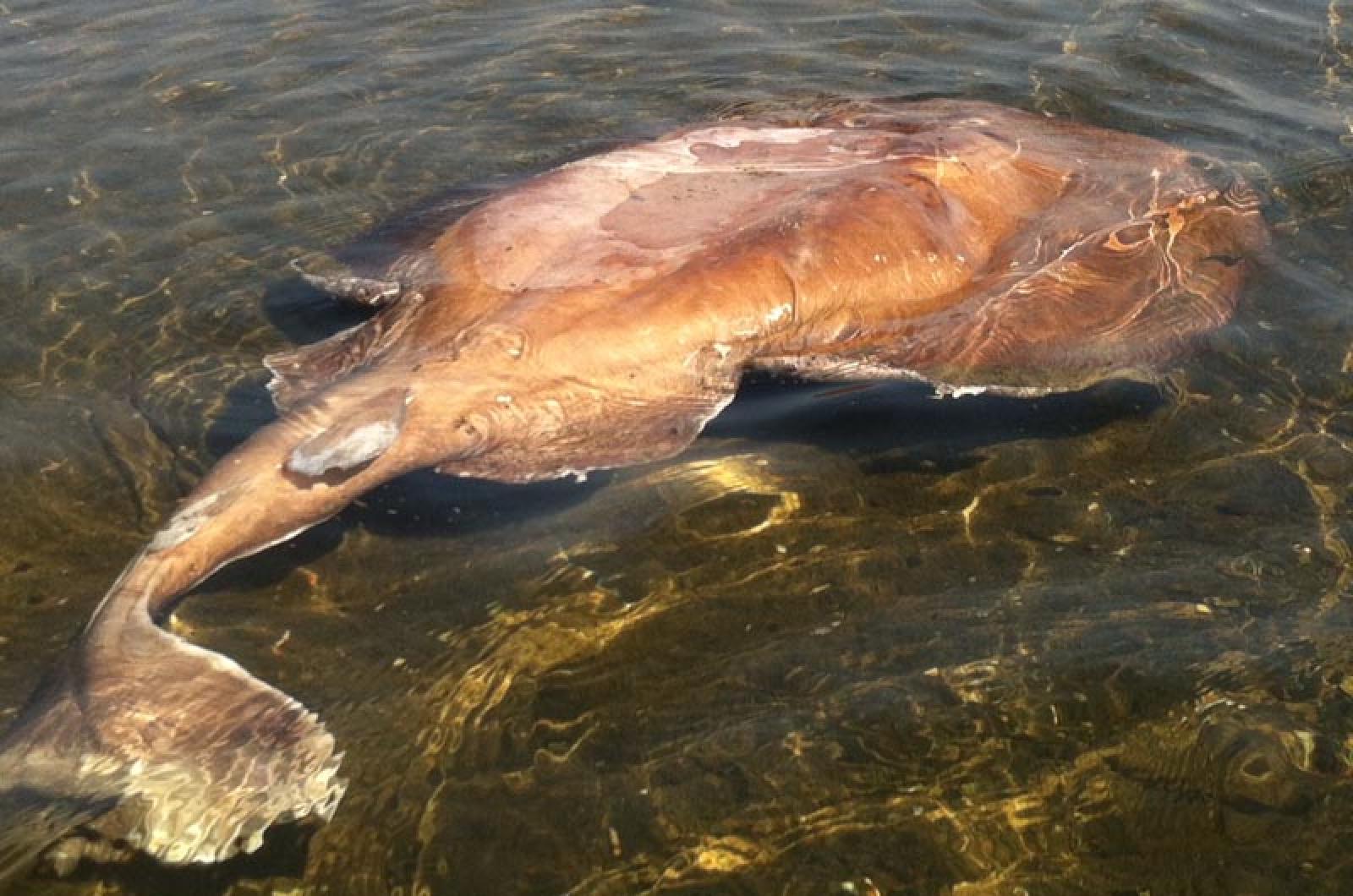Don’t be shocked if you see an Atlantic torpedo ray.
Surprise might be your first response to this large and unusual creature, but a jolt of electricity could follow if you aren’t careful.
“Look but don’t touch” is good advice if you spot a live one. Atlantic torpedo rays are also called numbfish and dark electric rays because of their power potential. The root ‘torpedus’ actually means numbness. And we know what their namesake naval weapon can do to an enemy.
Consider that an adult ray can produce up to 220 volts of electricity. This trick is possible because they have an organ that produces the electricity and electric plates connected in parallel that act as batteries to hold the charge.
This voltage provides for safety and food for the animal. Protection is almost assured with a charge of that size, but believe it or not, a few parasites and worms are predators of the torpedo ray — its primary predators, in fact.
Food, too, is easy to secure and subdue. The ray envelops its prey and issues a charge that will stun its soon-to-be snack. To aid in its food intake, this ray can distend its jaws, which allows it to consume surprisingly large fish and sharks, even with its small mouth. Eels and crustaceans are also part of its menu. The shock of the ray, while disturbing, is rarely fatal to humans. (For comparison, common household currents in the U.S. are 120 volts and 240 volts.) It can be painful, yes, and even has been known to knock a person unconscious. More dangerous, however, is the disorientation that swimmers or divers may experience after contact with these animals.
One of these giant generators was seen last week at Quansoo beach. It was impressive in its size, at more than five feet, though these rays are known to reach up to 200 pounds. Though the specimen seen was dead, it was still quite remarkable.
Although the range of these torpedoes reaches along the entire eastern seaboard, they tend to be a more pelagic species. The young can sometimes be found at shallow depths, but the adults prefer to be in deeper water and have been recorded as deep as 2,600 feet. According to those in the know, there have been longstanding reports of torpedos off Nantucket and Martha’s Vineyard, and they have been caught yearly in Vineyard Sound and in Buzzards Bay.
Crampfish is another alias for the torpedo ray. This name goes way back to the times of the ancient Greeks and Romans, who used this fish medicinally. They claimed that a shock was good for headaches and gout. The ancient Greeks were familiar enough with torpedo rays for Meno, in one of the dialogues of Plato, to use them as an analogy: Meno was struck dumb by Socrates’ insight, writes Plato, and Meno — as if stunned by a torpedo ray — no longer knew what to say.
They also believed that its liver oil rubbed externally would subdue even the worst cramps. In later times, this oil was also used as lamp fuel and reputed to be as good as sperm whale oil.
Torpedo rays are not known for their value as human foodstuff. They have been described as “flabby and tasteless,” so no angler is happy when they hook one of these big beasts. Any savvy fisherman or fisherwoman — especially one who received an unexpected jolt from their catch — would therefore likely to be heard uttering the old saying, “Damn the torpedoes; full speed ahead!”
Suzan Bellincampi is director of the Felix Neck Wildlife Sanctuary in Edgartown.




Comments (1)
Comments
Comment policy »